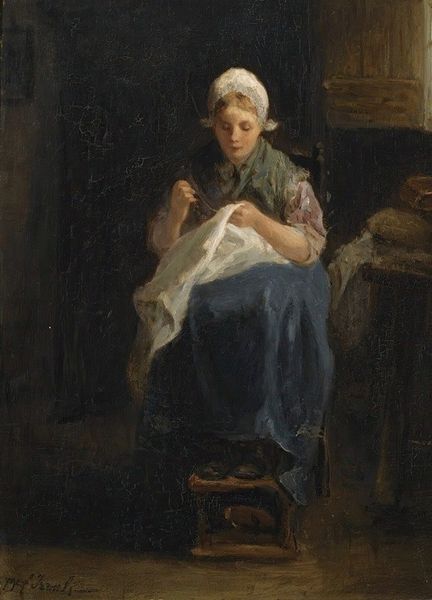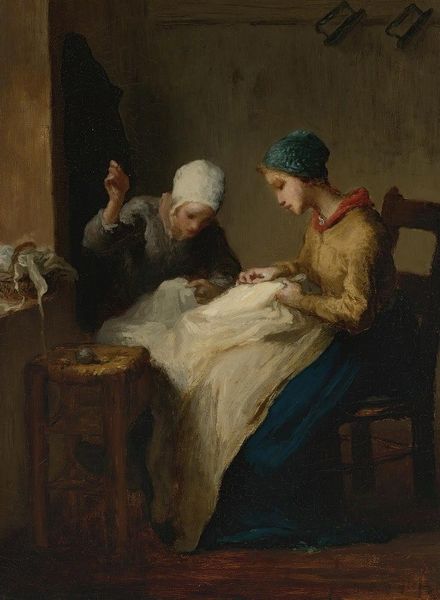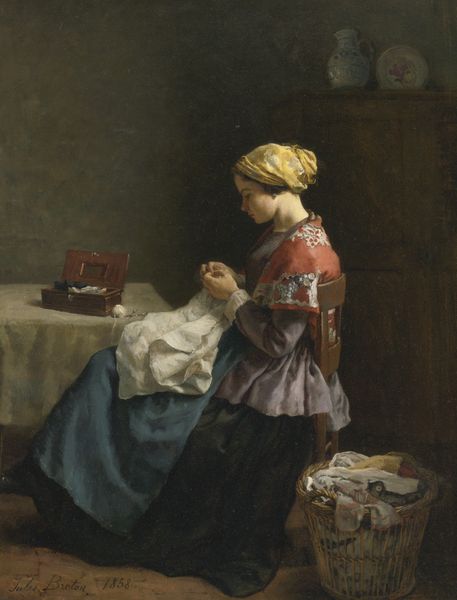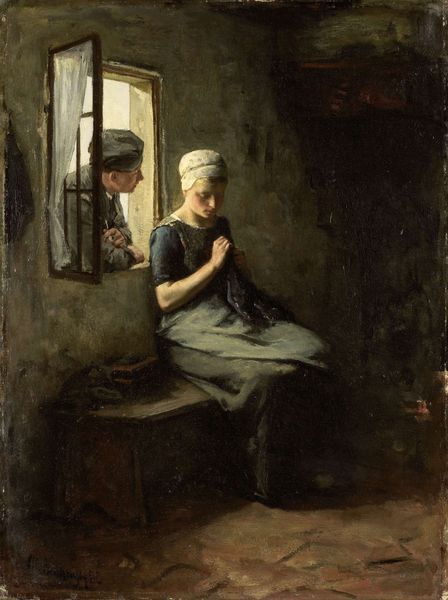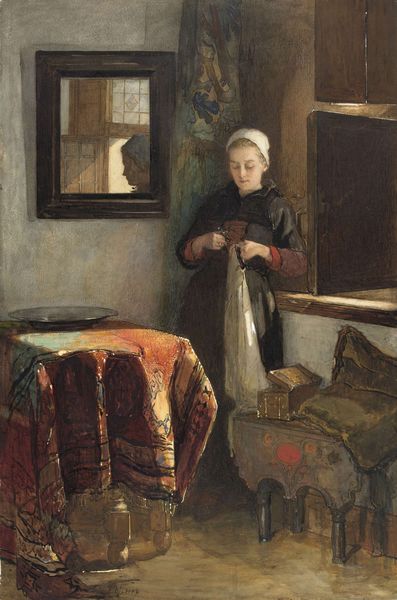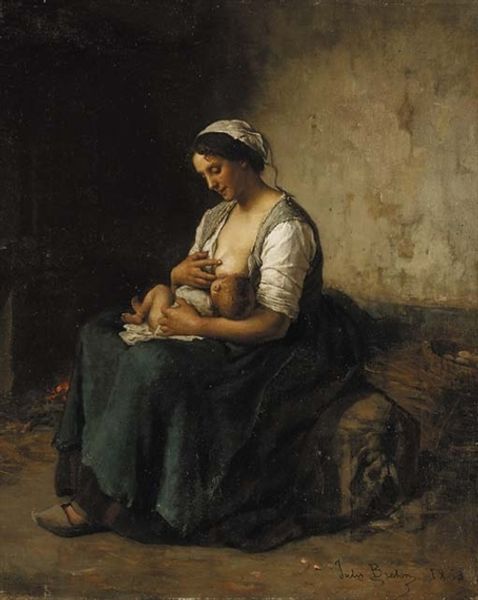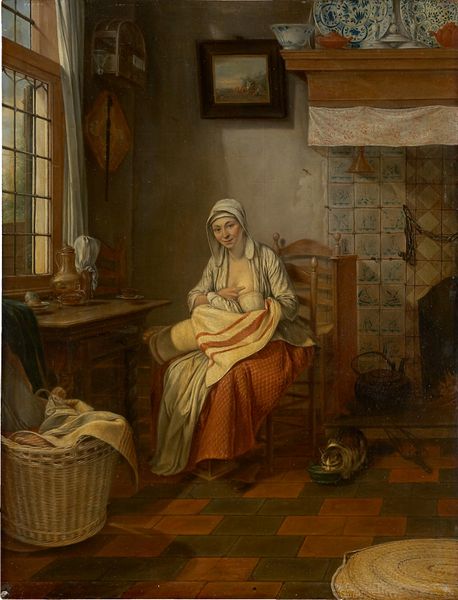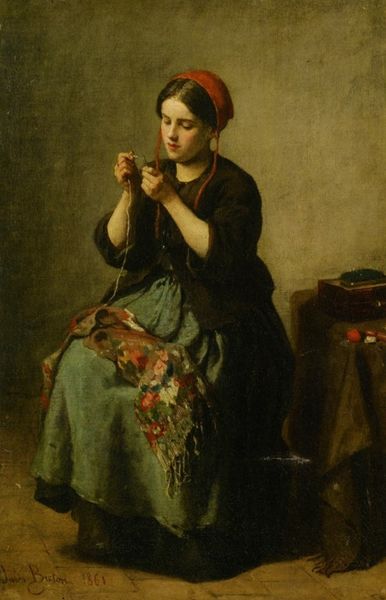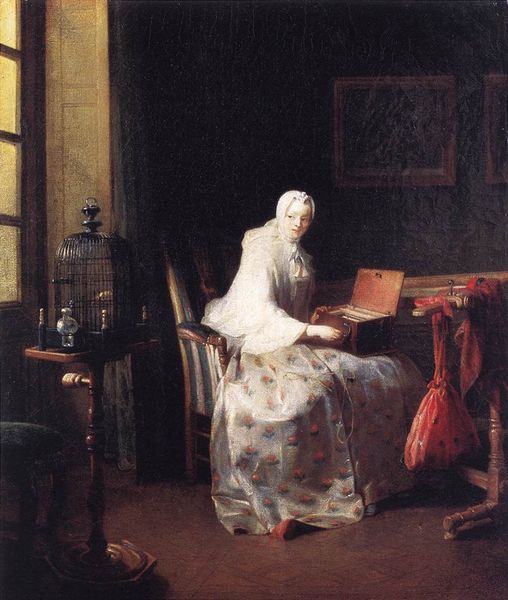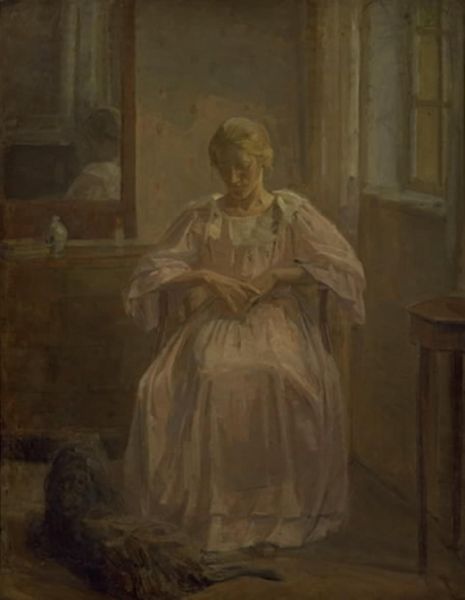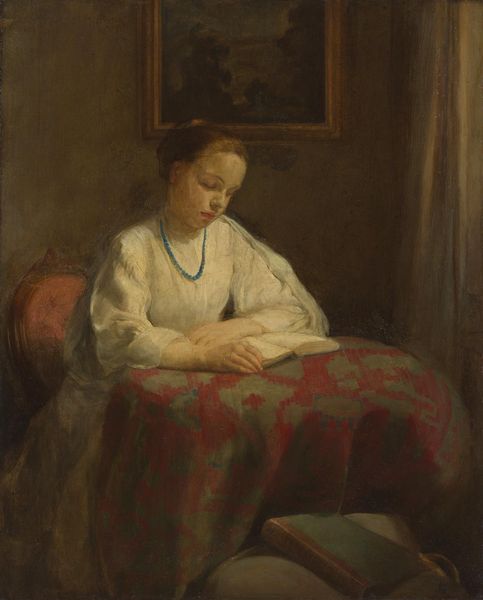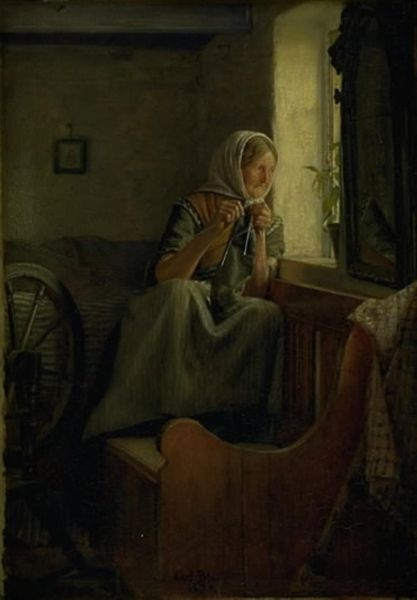
oil-paint, impasto
#
portrait
#
dutch-golden-age
#
oil-paint
#
oil painting
#
impasto
#
intimism
#
genre-painting
#
history-painting
#
realism
Copyright: Public Domain: Artvee
Curator: "The Little Seamstress," an oil on canvas work attributed to Jozef Israëls, created sometime between 1850 and 1888. What strikes you first about this piece? Editor: The gloominess of it all. Despite the small window letting light in, there's an overwhelming feeling of oppression and limited choices permeating the scene. It really brings a somber mood. Curator: Interestingly, the impasto technique in her face brings an added emphasis to that aspect of innocence, doesn't it? Editor: Absolutely, that is, until we delve deeper into the narrative. A lone flower barely survives in the vase on the windowsill and a stark contrast exists between that almost imperceptible symbol of purity and the backdrop depicting her reality of domestic labour, imposed upon her at a young age. Curator: Israëls’ work often explored the everyday lives of ordinary people. His realism sought to convey not just the external appearance but also the inner emotional state of his subjects, with deep psychological underpinnings. Do you feel that works in this portrayal? Editor: Yes, I do. The setting underscores a palpable silence that reflects on a kind of isolation. Note the colour choices—the prevalence of muted grays and browns. One can also feel a weightiness on her small shoulders. Her downcast eyes say a thousand unspoken words about gendered expectations and perhaps even a stifled future. Curator: The period certainly did witness its share of inequity and the piece really shows that in its intimacy. I appreciate how you link it to broader narratives. The way Israëls has framed this evokes timeless symbolism, a commentary that continues to resonate today. Editor: Agreed, although Israëls likely intended a sympathetic portrait, its enduring value comes from a much larger social commentary, still acutely relevant, of exploited childhoods and invisible labor. Curator: Indeed, it really makes us pause and question our perceptions, doesn’t it? Editor: It certainly does.
Comments
No comments
Be the first to comment and join the conversation on the ultimate creative platform.
